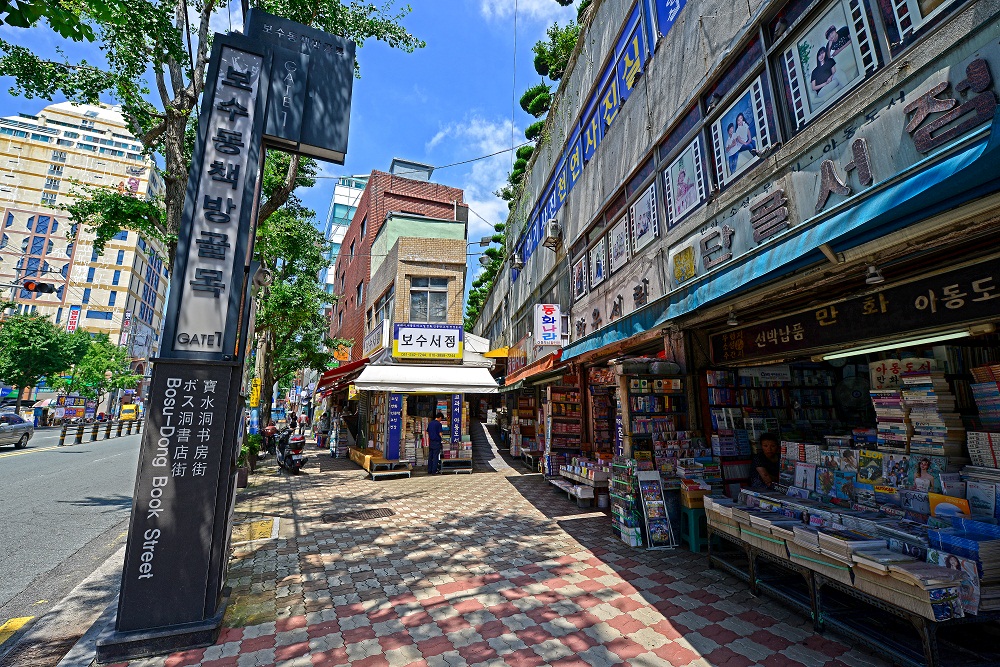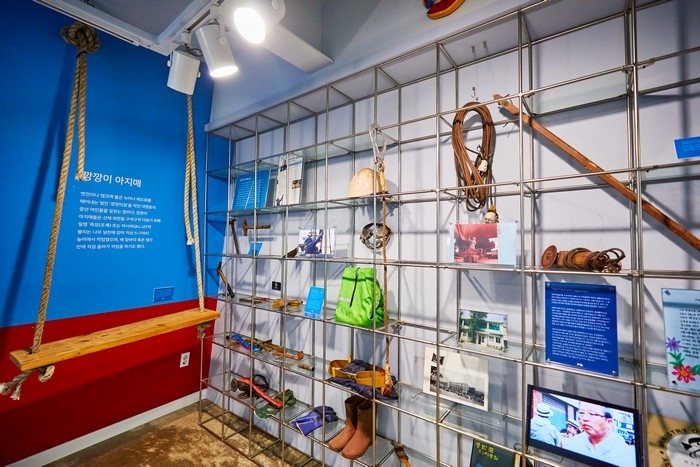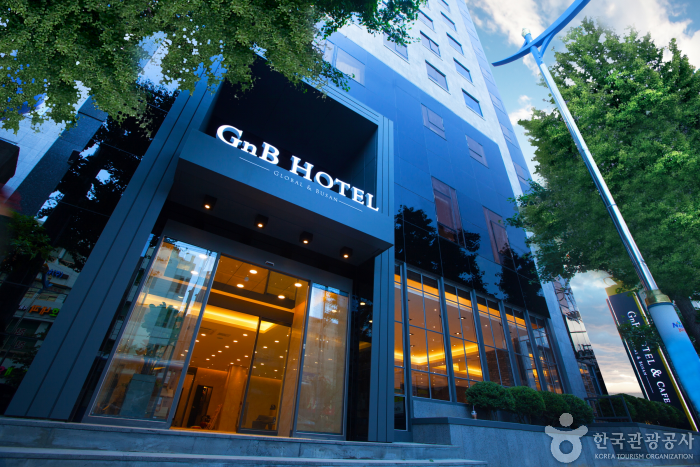Busan Jokbal (부산족발)
734.8M 2024-03-15
13, Gwangbok-ro, Jung-gu, Busan
051-245-5359
Busan Jokbal is a famous jokbal (braised pigs' feet) restaurant in the Jokbal Alley near the Gukje Market. Its signature dish is naengchae jokbal (chilled braised pigs' feet salad), chilled braised pigs' feet tossed in sauce, which also serves as one of the defining dishes of Nampo-dong Food Street. The salad is a flavorful combination of braised pigs' feet, fresh cucumbers, jellyfish, and mustard sauce.
Bosu-dong Book Street Cultural Center(보수동 책방골목 문화관)
746.8M 2023-01-09
8, Chaekbanggolmok-gil, Jung-gu, Busan
+82-51-743-7650
[The used bookstore that sells memories]
Bosu-dong Book Street has a unique background. It was formed after the independence of Korea (August 15) as a residential area in the empty place where the previous Gukje Market was demolished. Book stores began opening one-by-one and soon the street became known as Bosu-dong Book Street. The street is popular amongst booklovers for their used books as well as new books, and amongst travelers for the street’s unique atmosphere. Many young adults also frequent the street because there are many specialty shops for comic books. Every year, the Bosu-dong Culture Festival takes place and visitors can participate in events such as, make-your-own book cover, make-your-own book, and so on. The festival not only gives an opportunity to learn about the history of Bosu-dong Book Street, but have a good time as well.
KANGKANGEE Arts Village (깡깡이 예술마을)
774.7M 2025-10-24
36 Daepyeongbuk-ro, Yeongdo-gu, Busan
0507-1307-3339
In the late 19th century, Korea's first modern shipyard was established, and there are still more than a dozen repair shipyards and about 200 industrial companies in the area. It is said that the name of the village was born from the sound of a hammer hitting the surface of a rusty boat. In "My Name," it appeared as Inchang-si, the main stage of gangsters, and the unique atmosphere harmonized well with the content, adding to the dramatic fun. There are also many cute cafes to explore, and it is fun to experience a tour program that runs three times a day on weekends.
Urigeulbang (우리글방)
791.0M 2024-02-13
63 Daecheong-ro, Jung-gu, Busan
Urigeulbang, a venerable bookstore located in the renowned Bosu-dong Book Street in Busan, is celebrated for its trade in used books. This bookstore doubles as a book café, allowing visitors the unique experience of reading from its extensive collection while enjoying a cup of coffee or other beverages, without the obligation to purchase a book. The owner, an enthusiastic collector of used books, has amassed a vast array of old and rare editions, making it a treasure trove for bibliophiles. Adjacent to Urigeulbang is the Bosu-dong Book Street Cultural Center, where visitors have the opportunity to delve into the rich history of this unique bookstore alley.
Yangsanjip (양산집)
797.8M 2024-12-26
부산광역시 중구 중구로47번길 30
A long-standing dwaeji gukbap restaurant beloved by both vendors and visitors of the Kkangtong Market. The restaurant is small, so it’s often necessary to wait for a seat. Despite this, it remains popular among regulars, who are more than willing to wait. The popular menu item is the suyuk baekban (boiled pork slices set menu), which includes soup, rice, and separately served boiled pork.
Bupyeong (Kkangtong) Market (부평시장(깡통시장))
803.5M 2025-10-23
48 Bupyeong 1-gil, Jung-gu, Busan
+82-51-243-1128
Busan's Bupyeong Market is also known as Kkangtong (tin can) Market. It earned that funny name when it had a variety of imported canned goods from the United States for the US forces stationed in Korea during the Korean War. It was also known as "Dottegi (bustling plea) Market." All foreign products found in the country at that time were supplied from this market. Due to its vast property and many rare goods that were hard to find anywhere else during the time, it was also referred as "Gukje (International) Market." Nowadays, the market has reduced in size as many foreign products are freely imported, but the reputation and potential still remain. Some imported goods including liquor, clothes, ornaments, accessories, fashion items and electronic goods are still sold here.
A night market opens from 19:30-23:30 at the public parking lot and at Arcade 2 of the market . Along the 110m-long street market are 11 kiosks selling Korean food, 6 kiosks selling international food such as Japanese and Filipino foods, and 13 vendors selling clothes and accessories. The entrance of the market greets visitors with bright LED lights and fun performances. A magic show and a guitar performance take place twice a day by the entrance of the market and the at the four-way intersection inside the market.
Milgot Bakery (밀곳)
831.2M 2024-03-29
49 Bupyeong 1-gil, Jung-gu, Busan
Milgot Bakery is located in Bupyeong Market, which is full of Busan's local food. It is characterized by a trendy taste with Korean ingredients such as rice, mugwort, and black sesame. The best-selling Meossungmeossuk is made with Jeju mugwort, glutinous rice flour, and regular rice flour. Customors can ask to have the bread cut for their convenience upon order. Although the bakery is rather small, there are a lot of desserts, such as cookies including honey cookies and tarts with strawberries, figs, cherries, and shine muscat grapes.
Hound Hotel Premier Nampo [Korea Quality] (하운드호텔 프리미어 남포 [한국관광 품질인증])
857.1M 2024-07-01
24 , Bosu-daero, Jung-gu, Busan
+82-51-254-0702
Hound Hotel Premier is a newly built business hotel just 5-minutes’ walk from Jagalchi Station on the Busan Subway. Each room is equipped with high-quality bedding, a sofa, a desk, and a spacious bathtub; some rooms also have an outdoor terrace. There is an elevator and accessible rooms for disabled customers. Cribs can be provided for young children. There is a meeting room which can be hired, and a rooftop with fine views over the city. A concierge, luggage storage and foreign language service is available. The hotel is well positioned for restaurants, sight-seeing and shopping: Jagalchi Market and Bupyeong Kkangtong Market are both nearby.
GnB HOTEL (지엔비호텔(GNB호텔))
903.8M 2024-10-30
19 , Heukgyo-ro, Jung-gu, Busan
+82-10-8253-0708
GnB Hotel is a large-scale hotel located 10 minutes' walk from Jagalchi Station on the Busan Subway. It offers a wide range of room types, including Standard, Deluxe, Suite, and Penthouse. Specifically, the Penthouse and Penthouse+ rooms, which are the pride of the hotel, feature whirlpool spas where you can relax after a long journey while taking in the scenery of downtown Busan. They are also equipped with an induction cooktop and kitchenware. The restaurant on the B1 floor serves breakfast. The business center on the first floor provides guests with free access to a printer and scanner.
Homeplus - Yeongdo Branch [Tax Refund Shop] (홈플러스 영도)
953.4M 2024-04-16
57, Daegyo-ro 14beon-gil, Yeongdo-gu, Busan
-




![Hound Hotel Premier Nampo [Korea Quality] (하운드호텔 프리미어 남포 [한국관광 품질인증])](http://tong.visitkorea.or.kr/cms/resource/67/2651267_image2_1.jpg)

![Homeplus - Yeongdo Branch [Tax Refund Shop] (홈플러스 영도)](http://tong.visitkorea.or.kr/cms/resource/76/2889576_image2_1.jpg)
 English
English
 한국어
한국어 日本語
日本語 中文(简体)
中文(简体) Deutsch
Deutsch Français
Français Español
Español Русский
Русский